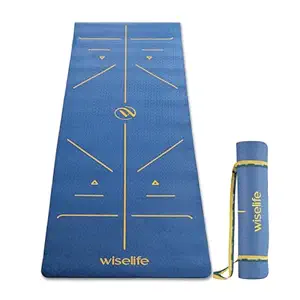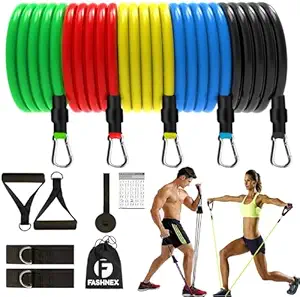It’s intimidating to set up a home gym, with social media showcasing immaculately designed spaces with top-of-the-line equipment and simple mirrors. But let’s get real: you don’t need a fancy setup or a big space to start your fitness journey. Most crucial is intention, commitment, and choosing the right gym equipment for home that aligns with your goal and budget.
In this manual, we’ll establish the true necessities for an economical home gym that will work for a beginner, busy professional, or anyone who just wants to stay in shape without a gym membership.
Why Build a Home Gym?
Before we get to the list of equipment, let’s first understand why a home gym is an investment of your time and worth it:

Convenience: No driving, no waiting for equipment.
Privacy: No judgment, just you and your exercise.
Flexibility: Train early morning, late night, or during work breaks.
Long-term savings: Skip monthly payments and invest once on long-term equipment.
With a limited budget and small space, you are able to create a highly effective home gym setup that addresses strength training, cardio, mobility, and flexibility.
Step 1: Set Your Fitness Goals

- Your goals should guide what you buy. Ask yourself:
- Do I lose weight or build muscle?
- Do I prefer strength training, cardio, or HIIT?
- Am I a beginner or advanced?
You can answer these to rank equipment that actually benefits your routine—most space-effective and money-saving.
Must-Have Gym Equipment for Home (Bare Essentials Only) |home gym setup
1. Yoga/Exercise Mat
Your floor is the best starting point. A great mat protects your joints during bodyweight training, yoga, and core work. It offers grip and comfort, too.
Choose: A non-slip, high-density mat (6mm+ thickness).
Pro Tip: Perfect for stretching, mobility drills, and post-training recovery.
2. Resistance Bands (Loop & Tube)
Lightweight, portable, and incredibly effective for strength and mobility work. Resistance bands can be used in place of dumbbells for most upper and lower body exercises.
Use for: Glute bridges, shoulder warm-ups, bicep curls, rows, and squats.
Budget: ₹300–₹800.
3. Adjustable Dumbbells or Fixed Dumbbells
If toning up, fat burning, or muscle gain is your aim, dumbbells are a no-brainer.
Adjustable Dumbbells: Save space and have different weights in one.
Fixed Dumbbells: If you are working with fixed weight and need a basic set.
Start with: 2kg–5kg for beginners. Upgrade as you get bigger.
Budget: ₹1000–₹3500 depending on the weight.
4. Skipping Rope
Don’t underestimate this. Jump rope is one of the best equipment for cardio and coordination.
Benefits: Burns calories fast, improves agility, and boosts endurance.
Budget: ₹150–₹400.
Bonus: Needs only 5 feet of space.
5. Kettlebell (Optional but Effective)
Perfect for full-body exercises—especially compound exercises such as swings, goblet squats, and Turkish get-ups.
Suggested weight: 6kg–12kg for women, 10kg–16kg for men (depending on level).
Budget: ₹1000–₹2500.
6. Pull-Up Bar (Doorway or Wall Mount)

Build upper body and core strength with pull-ups, chin-ups, and hanging leg raises.
Doorway bars don’t require drilling.
Mounted bars are safer for regular users.
Budget: ₹1000–₹2000.
7. Bench or Flat Surface
A necessity if you’re serious about building strength. You can perform bench presses, step-ups, seated presses, or Bulgarian split squats.
If you don’t own a workout bench, use a sturdy coffee table or low platform until you can afford one.
Optional Add-ons Later
Foam Roller – For myofascial release and muscle recovery.
Ankle Weights – Great for leg training and intensity.
Mini Stepper or Stationary Cycle – For rainy day cardio low-impact cardio.
These aren’t necessarily a requirement to begin with, but can supplement your home gym in the future.
How Much Space Do You Need?
You don’t need a whole room.
A 6×6 ft space is more than large enough for all but the most elaborate of workouts.
Choose a ventilated space, with minimal clutter, and ideally a mirror (to check form). Even a balcony, hallway, or corner of your bedroom can serve as your home gym.
Budget Home Gym Setup (Starter Pack Under ₹5000)
Budget Home Gym Setup (Starter Pack Under ₹5000)

| Equipment | Approx. Cost (₹) |
| Yoga Mat | ₹500 |
| Resistance Bands Set | ₹700 |
| Dumbbells (5kg pair) | ₹1500 |
| Skipping Rope | ₹300 |
| Pull-up Bar (Doorway) | ₹1000 |
| Total | ₹4000–₹5000 |
You can always add to this setup later as your goals change. But this setup addresses strength, cardio, and mobility.
How to Stay Motivated at Home

It is easy to purchase equipment. Consistent use is the real key. Here’s what works:
Schedule workouts as meetings. Set a time and commit.
Do guided workouts on YouTube or fitness apps if you’re lost.
Track progress in a journal or app—small wins breed motivation.
Declutter and clean your space—beauty increases consistency.
Switch workouts every 2–3 weeks to avoid boredom.
Avoid These Home Gym Setup Faux Pas
Purchasing it all in bulk and never utilizing half of it.
Purchasing heavy equipment that takes up too much space.
Omitting warm-up and recovery tools.
Not creating rules like “no phone scrolling through it during a workout.”
Don’t forget: A cheap home gym that gets used is stronger than a fancy space that never sees the light of day.
Real Talk: What You Really Need
- You don’t need a treadmill, leg press, or multi-gym rack to be fit.
- What you really need is
- A dedicated small space
- Some essential equipment
- A plan (at least a simple one)
- Patience and dedication
- That’s it.
Fitness isn’t about high-end equipment—it’s about showing up. A solid home gym setup eliminates excuses and builds a lifetime habit. You might be a working professional, student, or just someone who needs to save commute time, but you can change your health forever by beginning in small ways.
Final Thoughts
- Your home is the gym—if you make it that way.
- Start with basics. Invest wisely. Be consistent. Having ₹3000 or ₹30,000, it is absolutely possible to set up a home gym equipment that aligns with your lifestyle.
- Because ultimately, it’s not the hardware but the implementation that yields outcomes.






